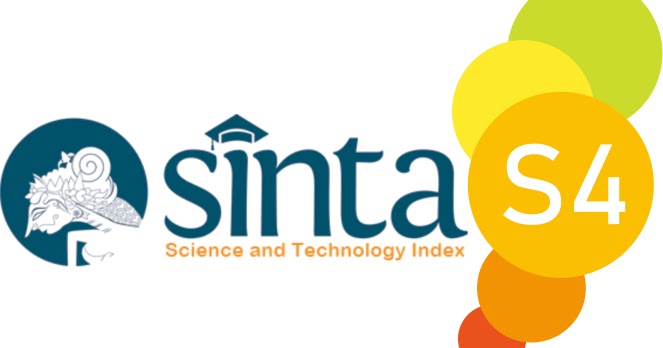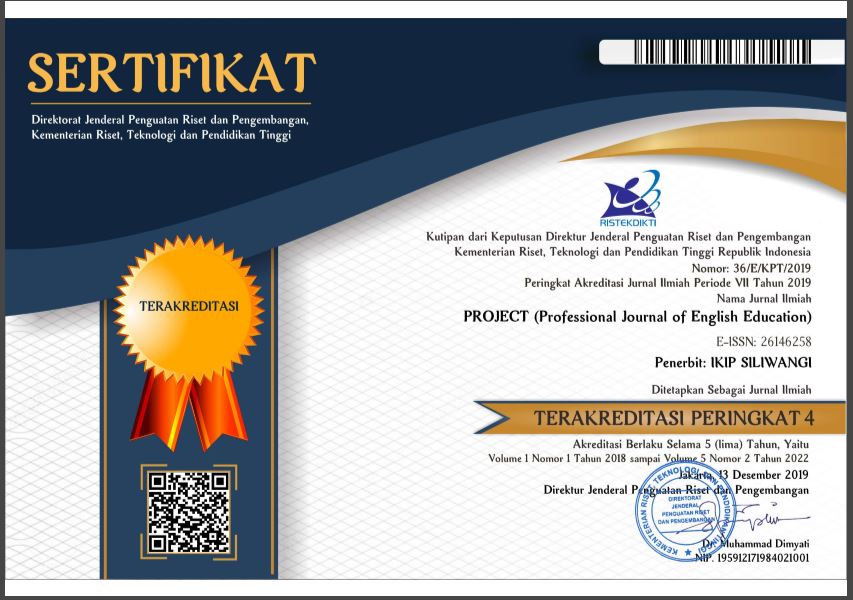Linguistic Landscape in Palangka Raya City: Patterns, Roles, and Functions
Abstract
The linguistic landscape refers to the visibility and presence of languages in public spaces. The use of linguistic landscape in public spaces has patterns, roles, and functions. Language plays a vital role in human life because language is a means of communication in everyday life. This study aimed to describe the linguistic landscapes that appeared in public spaces qualitatively. The researcher collected the data through observations and photo documentation. The research data and information obtained showed that the linguistic landscape in Palangka Raya plays a crucial role. The use of English in Palangka Raya can be easily found in public spaces, whether in the form of words, phrases, and sentences, monolingual (English), bilingual (English-Indonesian), or multilingual. This research also reported that the roles of the linguistic landscape found in Palangka Raya are identity representation and social representation. As well as the function of the linguistic landscape itself, the result of this study showed that the function of the linguistic landscape in the public space of Palangka Raya is informative uses and interactive uses. The use of English in Palangka Raya occurs because English is associated with globalization, language and cultural transformation towards modernity, high fashion, and personal freedom.
References
Addler, R. B. & Rodman, G. (2009). Understanding Human Communication. New York: Oxford University Press.
Akindele, D. O. (2011). Linguistic Landscapes as Public Communication: A Study of Public Signage in Gaborone Batswana. International Journal of Linguistics, 3(1), 1-11.
Backhaus, P. (2006). Multilingualism in Tokyo: A look into the linguistic landscape. International journal of multilingualism, 3(1), 52-66.
Backhaus, P. (2007). Linguistic Landscapes: A Comparative Study of Urban Multilingualism in Tokyo. Clevedon–Buffalo–Toronto: Multilingual Matters.
BEN-RAFAEL, L. L. E. (2008). A sociological approach to the study of linguistic landscapes. In Linguistic Landscape (pp. 48-62). Routledge.
Berg. B. L. (2001). Qualitative Research Methods for the Social Sciences. Boston: Allyn and Bacon.
Bogatto, F. and Christine, H. (2010) Linguistic Landscape and Language Diversity in Strasbourg: The Quartier Gare. Linguistic Landscape in the City, 15, 275-291.
Chesnut, M. L., Schulte, J. V. (2013). The Language Lessons around Us: Undergraduate English Pedagogy and Linguistic Landscape Research. English Teaching: Practice and Critique, 12(2), 102-120.
Cook, V. (2013). The language of the street. Applied Linguistics Review, 4(1), 43-81.
Cruz, S. S., Roskamm, N., & Charalambous, N. (2018). Inquiries into public space practices, meanings and values. Journal of Urban Design, 23(6), 797–802. https://doi.org/10.1080/13574809.2018.1525289.
Dines, N. (2018). What’s in a word? Contextual diversity, urban ethnography and the linguistic limits of the street. The Sociological Review, 66(5), 952 –967.
Dixson, A. E. (2015). Analyzing the Multilingual Linguistic Landscape of Buffalo, New York. State University of New York, Fredonia, New York.
Gaiser, L. and Matras, Y. (2016). The Spatial Construction of Civic Identities: A Study of Manchester’s Linguistic Landscapes. University of Manchester: Manchester.
Gorter, D. & Cenoz, J. (2007). Knowledge about Language and Linguistic Landscape. Encyclopedia of Language and Education, 2nd revised edition, (pp. 1-13). Berlin: Springer Science.
Gorter, D. (2006). Further possibilities for linguistic landscape research. Linguistic landscape: A new approach to multilingualism, 81-89.
Gorter, D. (2013). Linguistic landscapes in a multilingual world. Annual Review of Applied Linguistics, 13(1), 190-212. doi: 10.1017/S0267190513000020.
Haynes, P. (2012). Welsh Language Policy: A Study of the Linguistic Landscape at Cardiff University. The University of Birmingham.
Huebner, T. (2016). Linguistics Landscape: History, Trajectory and Pedagogy. MANUSYA: Journal of Humanities, Special Issue No. 22.
Huebner, T. (2020). Language in the Public Space: An Introduction to the Linguistic Landscape, written by Holger Schmitt. Manusya: Journal of Humanities, 23.
Huebner, T. 2006. “Bangkok’s linguistic landscapes; Environmental print, codemixing, and language change”, in: Durk Gorter (ed.), Linguistic landscape; A new approach to multilingualism, pp. 31-51. Clevedon: Multilingual Matters.
Jaworski, A. & Thurlow, (2012). Semiotic landscapes: Language, image, space. Language in Society, 41(1), 130-133.
Juffermans, K. (2012). Multimodality and audiences: Local languaging in the Gambian linguistic landscape. Sociolinguistics Studies, 6(2), 259–284.
Koskinen, K. (2012). Linguistic Landscape as a Translational Space: The Case of Hervanta, Tampere. Collegium:Studies across Disciplines in the Humanities and Social Sciences, 13, 73–92.
Landry, R. & Bourhis, R. (1997). Linguistic Landscape and Ethnolinguistic Vitality: An Empirical Study. Journal of Language and Social Psychology, 16(1), 23-49.
Moriarty, M. (2014). Contesting Language Ideologies in the Linguistic Landscape of an Irish Tourist Town. International Journal of Bilingualism, 18(5), 464-477.
Piller, I. (2001). Identity construction in multilingual advertising. Language in Society, 30(2), 153-186. doi: 10.1017/S0047404501002019.
Piller, I. (2003). Advertising as a site of language contact. Annual Review of Applied Linguistics, 23(1), 170-183. doi:10.1017/S0267190503000254.
Sisilda, R., Luardini, M. A., Asi, N., & Eliza, I. (2022). The Use of English Linguistic Landscape in Palangka Raya City (Penggunaan Bahasa Inggris Dalam Landskap Linguistik di Kota Palangka Raya). Jurnal Gramatika: Jurnal Penelitian Pendidikan Bahasa dan Sastra Indonesia, 8(1), 65-77.
Sutthinaraphan, K. (2016). A Linguistic Landscape Study of Advertising Signage on Skytrain. MANUSYA: Journal of Humanities, Special Issue, 22, 53-71.
Takhtarovaa, S. S., Kalegina, T. E., and Yarullinac, F. I. (2015). The Role of English in Shaping The Linguistic Landscape of Paris, Berlin and Kazan. Procedia - Social and Behavioral Sciences, 199, 453 – 458.
Tan, P.K.W. (2014). Singapore’s Balancing Act, from the Perspective of the Linguistic Landscape. Journal of Social Issues in Southeast Asia, 29(2), 438-66.
Thongtong, T. (2016). A Linguistic Landscape Study of Signage on Nimmanhemin Road, A Lanna Chiang Mai Chill-Out Street. MANUSYA: Journal of Humanities, Special Issue, 22, 72-87.
Yavari, S. (2012). Linguistic Landscape and Language Policies: A Comparative Study of Linköping University and ETH Zürich. Linköping University.
Downloads
Published
Issue
Section
License

This work is licensed under a Creative Commons Attribution-ShareAlike 4.0 International License.




